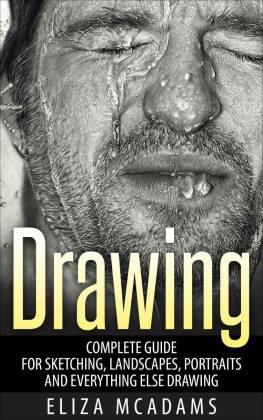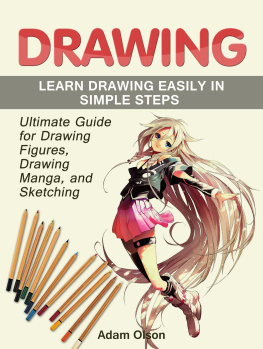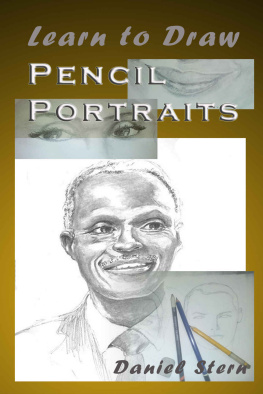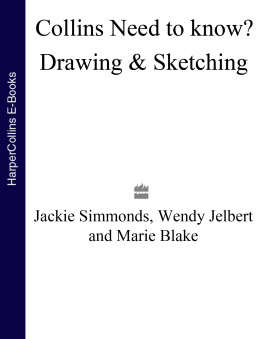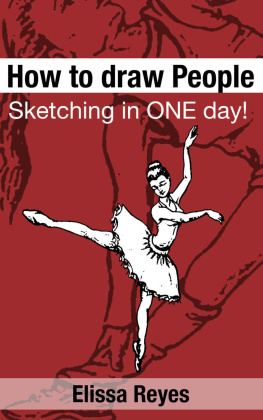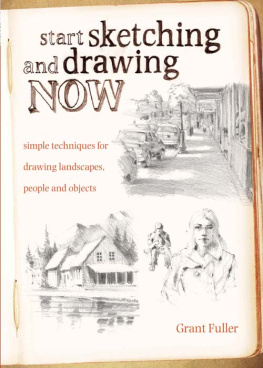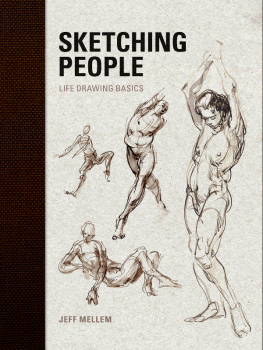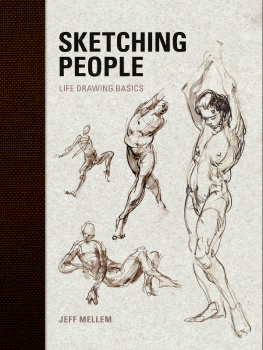I want to thank you and congratulate you for downloading the book, Drawing: Best Techniques for Sketching, Landscapes, Portraits and Everything Else Drawing .
This book contains proven steps and strategies on how to get better when it comes to drawing landscapes, portraits and just about any kind of subject you can think of. Get familiar with the basics and different techniques and apply what you've learned. You'll surely see a significant change in your drawings the next time you give it a try.
Chapter 1: Getting Started With Sketching
If you're new to drawing, one of the first things that you need to sort out would be the supplies you'll be using. Taking the art seriously requires more than your average pencil and piece of paper. What you need are the real basics, the tools that would actually compliment your abilities. To help you out, here's a quick list of what you'll need:
Three to five different pencils with varying grades. Drawing pencils come in a variety of grades which indicate how soft it is. Now, this softness pretty much influences just how dark the lines will be. The softer a pencil, the darker it would be since it leaves more graphite in comparison to a harder grade. Harder pencils are usually graded as H to 9H, the latter being the hardest of the lot. The softer ones are graded B to 9B with the latter, being the softest. If you want something that falls in the middle range, an HB pencil would be the safest bet. The best range to begin with if you're still a beginner? Try 2H, 2B and 4B.
Choosing the right eraser. Different erasers are meant to be used for different purposes so finding the right one is key. It is one of the most important tools you'll be buying, after all. Start with the basics. A vinyl erases, usually rectangular in shape, and a kneaded eraser are always good to have. The vinyl one is hard and is the best for erasing charcoal and graphite. The kneaded one, as the name suggests, is softer and moldable. This is great if you're trying to erase specific parts of your drawing and want to avoid disturbing the rest of your drawing. It can also be used for lightening certain areas as it isn't as rough on your paper as the vinyl variety. Of course, using a light hand on these tools is a must.
A plastic triangle and a ruler. A 12 to 18 inch ruler would be great for beginners and covers pretty much all the things you might want to use it for. For your triangle, a 10 to 12 inch with one right angle would be just right for the job. Both are useful if you need to draw straight lines or want to measure the distance between objects in your sketch. Having ones that are transparent are better too as you'll be able to see through them and check if everything is lining up properly. The plastic triangle is a useful guide if you were to draw right angles of any size. Until you're able to do these things without the guides, having them handy would certainly make drawing hassle free.
Paper. Since you're still practicing and familiarizing yourself with the different techniques, you will be needing lots of paper. A sketchbook with at least 50 sheets is good to begin with. If you don't want to be too wasteful, using recycled paper for practicing is also a great idea. You might also want to familiarize yourself with different paper textures. This should help you find the one you're most comfortable with.
If you're teaching yourself how to draw, there are certain mistakes that you will inevitably encounter especially since you don't have a teacher constantly checking what you're doing. However, don't let that deter you from continuing. When it comes to drawing, everything takes time and regular practice. There's no way you'll be able to pull of a landscape or a proper portrait in the first seating. In fact, a bit of frustration may begin to mount before you're able to make something you're satisfied with. Again, don't let that stop you. Just remember that with every obstacle you pass, you're progressing as an artist.
With that said, there are a few learning curves that you can do without. To help you pass all of those and avoid any further hassles in your learning, here are some of the common beginner mistakes that you should avoid:
If you're copying from a picture, make sure that you take the time to study its details. Some people can get too excited when it comes to getting started that they completely overlook the details.
If you're drawing a portrait, measurements are important. Make sure that you take the time to get the proportions right as well before you get started. This will certainly make a difference when it comes to the final result.
Choose the right pencils for the project. It is likely that you'll need more than one in order to bring in some depth into your drawing. Always take the time to study this and plan out which pencils to use. This should help you avoid any hassles along the way and minimize potential mistakes.
Never rush anything and focus on what you're doing. Rushing can result in rough lines, uneven proportions and a whole lot of mistakes that might end up ruining the entire picture. Remember that sketching takes time and the more time you put into it, the better the picture would be.
Remember your layers. This is especially helpful if you're things such as hair, foliage or grass. Having layers and different shades can help bring it to life instead of making it look like a messy blob. Scribbling is tempting since it is the quicker route, but it is best avoid it at all costs. Giving thought and extra care into adding these details will make a significant difference in the final result.
Be aware of lighting. This would make sure that your drawing has depth and wouldn't come out looking flat and one dimensional. This can be tricky for beginners but once you become more familiar with the process, it gets much easier.
Always plan out what you want to draw before you even get started. Also, don't expect it to come out looking fantastic, especially if it's your first time. Sketching is a process of trial and error. Just remember that with every mistake that you make, you are also learning something new which you can apply to the next drawing.

DeviantArt Attribution: chaosghidorah
Image shows great composition. Fine detail in foreground with larger objects at the back of the image, thus showing perspective.

